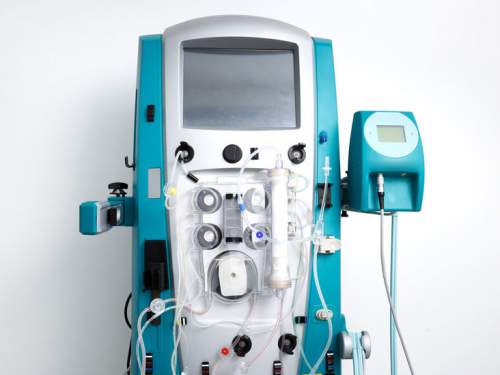Kidney issues are one of the most reported health-related issues in Kenya today. Kidney issues are not only painful and disturbing, but some are also deadly. Hence, special attention is now being paid to kidney-related diseases in recent times.
Kidney dialysis is a method of treating kidney diseases. Generally, the process involves the removal of excess water from the blood. The process serves functions like an artificial kidney that performs the function of healthy kidneys.

In this post, we will take a look at what the process generally entails and more importantly, how much it costs in Kenya today.
Cost of Dialysis in Kenya in [year]
Specifically, you should spend up to KES 5,000 per session to undergo kidney dialysis in public hospitals. The cost is higher in private hospitals and can be up to KES 8,000 per session.
Generally, the cost of dialysis in Kenya varies depending on the hospital. The price is usually per session, and private hospitals are more expensive compared to public hospitals. Several factors contribute to how much kidney dialysis goes on in Kenya.
Another factor that affects the amount dialysis goes for is the type of dialysis the patient is going for. This usually depends on the condition the patient is trying to treat and the doctor’s recommendation. Prices also vary per location. There is a high possibility that the cost of dialysis in cities like Nairobi is higher than in many other cities or rural areas in the country.
Kidney dialysis is getting more popular in Kenya today, especially with the fact that many hospitals now conduct the procedure. It is a bit dicey to put an amount to the exact cost of dialysis. This is because there are many factors that determine how much the procedure goes for. One of the most obvious factors is the hospital conducting the procedure. For instance, kidney dialysis in private clinics and hospitals is usually more expensive than in government-owned institutions.
Life Expectancy Of Dialysis Patients
The life expectancy of dialysis patients in Kenya depends on the treatment taken, how well patients follow the treatment plan, and other medical conditions. Generally, the average life expectancy is between 5-10 years for dialysis patients. However, there are records of patients who lived well above that range.
When Do Patients Need Kidney Dialysis?
In cases where a patient’s kidney ailment becomes very serious and passes a point where there is not enough function to steady the body, then the patient requires either a transplant or dialysis. Dialysis starts when patients experience symptoms that point towards serious kidney diseases and/or lab tests show toxic levels of waste in the blood. There are many types and symptoms that suggest kidney failure. Some of the common symptoms include nausea, fatigue, inflammation, and continual throwing up.
The time the patient should commence dialysis depends on some factors including the age of the patient, the energy level of the patient, overall health, lab test results that show the extent of the impairment, and the patient’s readiness to commit to a treatment plan. While dialysis makes patients feel much better and live longer in many cases, it requires a lot of time and commitment from the patient. Medical practitioners usually advise patients on the period they should commence the treatment and in many cases, they also advise on the type of dialysis that would benefit the patient and the treatment plan and duration.
How Kidney Dialysis Work
There are two main types of dialysis and the procedures are slightly different. The first types is the hemodialysis. For this type of dialysis, the patient is required to sit or lie back in a chair. A technician working with the doctor will place two needles in the patient’s arm where the fistula or graft is situated. A force in the dialysis machine gradually draws out the blood of the patient, and then sends it through another dialyzer. This functions like a kidney and sieves out extra salt, waste, and fluid. The cleaned blood is then sent back into the patient’s body through the other needle in the arm. If a catheter is used, blood pumps out of one and a cleansed blood flows into the body through the other. Hemodialysis can be done in various medical centres. They can be done in hospitals, various dialysis centres and can even be done at home.
Each session, regardless of where the patient is taking it, lasts between 3 to 5 hours and are usually required up to three times a week, depending on the criticality of the kidney disease. It should be noted that if this treatment is done at home, it might be done up to 6 to 7 days a week, depending on how serious the kidney issue is. Having this process at home is usually more convenient for patients as they can easily relax, watch movies and watch their favourite channels during the process. The process also makes patients feel much better and night and enjoy good sleep. Another type of kidney dialysis is peritoneal dialysis. Here, the inside lining of the patient’s tummy is made to acts as a natural filter.
Possible Side Effects of Dialysis
While the process of dialysis itself does not necessarily hurt, some patients have complained about some side effects. Low blood pressure is one come effect of the process. Other possible side effects include nausea, dry skin that could be itchy, vomiting, cramps in muscles, and/or fatigue.
It is also important to state that patients who are under dialysis should be particularly careful about what they feed on as this has a large effect on how the body will respond to the treatment process. Patients should contact their doctors to advise on the amount of fluid they take, as well as protein and salt intake quantity. It is also important for patients to stay away from what could harm the kidney, especially alcohol and smoking.